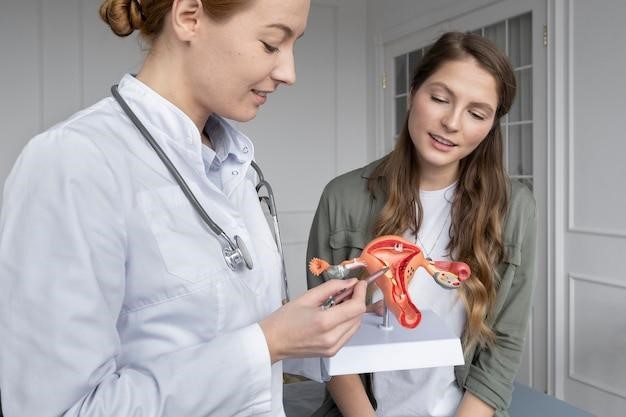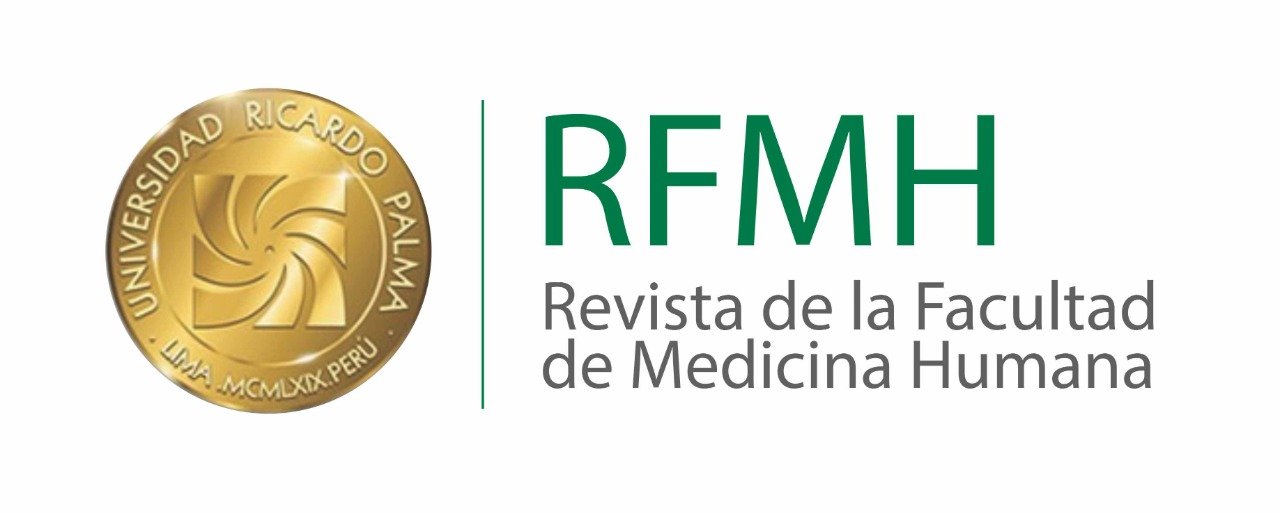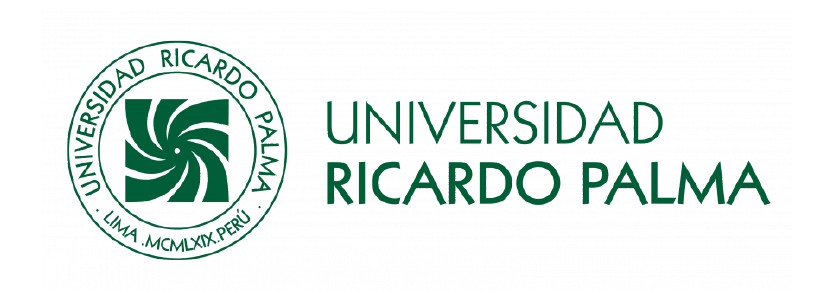Frequency of the symptoms of Polycystic Ovary Syndrome and Premenstrual Syndrome, related to academic stress in medical students of a private university in Peru
Frecuencia de la sintomatología del Síndrome de Ovario Poliquístico y el Síndrome Premenstrual, relacionado con el estrés académico en estudiantes de medicina de una universidad privada del Perú
DOI:
https://doi.org/10.25176/RFMH.v23i3.5586Keywords:
Polycystic ovary syndrome, premenstrual syndrome, Psychological Stress, medical studentsAbstract
Introduction: Polycystic ovary syndrome (PCOS) and premenstrual syndrome (PMS) are prevalent. Objective: to determine the frequency of the symptoms of polycystic ovary syndrome and premenstrual syndrome and its relationship with stress in medical students. Material and methods: Cross-sectional analytical study. The study population was 322 medical students from the 1st to the 12th cycle, chosen by convenience from a private university in Trujillo. Through a google form, the "SPM" questionnaire, "the SISCO inventory of academic stress", and "the questionnaire on polycystic ovary" were applied; prior informed knowledge, it had the approval of the Bioethics Committee of the university. Results: The SOP presented a high probability of 5.28%, medium of 46.58% and low of 48.13%.The frequency of PMS in the levels, mild, moderate and high were 47.52%, 25.47% and 4 0.04% respectively. The levels of stress were: mild, moderate and deep 4.35%, 65.22% and 30.43%, respectively. A highly significant association was found between stress and SPM; stress and PCOS; p = 0.000915106 and p= 1.8589E-25 respectively Conclusions: The frequency of PMS, the high probability of PCOS and the levels of stress were high and there is a significant association between stress, PMS and PCOS.
Keywords: Polycystic ovary syndrome, Premenstrual syndrome, stress, medical students (MESH).
Downloads
References
Escobar-Morreale, H. Polycystic ovary syndrome: definition, aetiology, diagnosis and treatment. Nat Rev Endocrinol 2018; 14: 270–284. https://doi.org/10.1038/nrendo.2018.24
Al Wattar BH, Fisher M, Bevington L, Talaulikar V, Davies M, Conway G, Yasmin E. Clinical Practice Guidelines on the Diagnosis and Management of Polycystic Ovary Syndrome: A Systematic Review and Quality Assessment Study. J Clin Endocrinol Metab. 2021 Jul 13;106(8):2436-2446. doi: 10.1210/clinem/dgab232.
Síndrome premenstrual (SPM) - Síntomas y causas - Mayo Clinic [Internet]. Mayoclinic.org.; 2022 [cited 2022 Jun 8]. Available from: https://www.mayoclinic.org/es-es/diseases-conditions/premenstrual-syndrome/symptoms-causes/syc-20376780
Direkvand-Moghadam A, Sayehmiri K., DelpishehA., Kaikhavandi S. Epidemiology of Premenstrual Syndrome (PMS)-A Systematic Review and MetaAnalysis Study. Journal of Clinical and Diagnostic Research. JCDR. 2014 8(2): 106–109. https://www.ncbi.nlm.nih.gov/pmc/articles/PMC3972521/pdf/jcdr-8-106.pdf . DOI: 10.7860/JCDR/2014/8024.4021.
Canchuricra H, Zúñiga T. Estrés académico y síndrome premenstrual en estudiantes de obstetricia de la universidad nacional de Huancavelica, 2014. Universidad Nacional de Huancavelica [internet]. Available from: https://repositorio.unh.edu.pe/bitstream/handle/UNH/627/TP%20-%20UNH%20OBST.%200015.pdf?sequence=1&isAllowed=
Argimon J, Jiménez J. Métodos de investigación clínica y epidemiológica. 5° ed. España: Elsevier; 2019.
Halbreich U , Backstrom T, Eriksson E, O'Brien S , Calil H, Ceskova E et al, Clinical diagnostic criteria for premenstrual syndrome and guidelines for their quantification for research studies, Gynecological Endocrinology. 2007; 23:3, 123-130, DOI: 10.1080/09513590601167969
Rotterdam ESHRE/ASRM-Sponsored PCOS consensus workshop group. Revised 2003 consensus on diagnostic criteria and long-term health risks related to polycystic ovary syndrome (PCOS). Hum Reprod 2004; 19:41.
Paniagua J. Relación de los estilos de vida y el síndrome de ovario poliquístico en las estudiantes de VII y VIII ciclo de la escuela profesional de enfermería de la Universidad Alas Peruanas, Arequipa 2016. [Arequipa, Perú]: Universidad Alas Peruana; 2016. Available from: https://repositorio.uap.edu.pe/bitstream/handle/20.500.12990/1136/Tesis_Relaci%c3%b3n_De_Los_Estilos_De_Vida_Y_El_S%c3%adndrome_De_Ovario_Poliqu%c3%adstico.pdf?sequence=1&isAllowed=y
Barraza Macías A El Inventario SISCO del Estrés Académico [Internet]. ResearchGate. unknown; 2007 [cited 2022 Jun 8]. Available from: https://www.researchgate.net/publication/28175062_El_Inventario_SISCO_del_Estres_Academico
Tabassum S, Afridi B, Aman Z, Tabassum W, Durrani R. Premenstrual syndrome: frequency and severity in young college girls. J Pak Med Assoc. PubMed [Internet] 2005 [citado el 17 de julio de 2022]; 55 (12): 546-9. Disponible en: https://pubmed.ncbi.nlm.nih.gov/16438276/#:~:text=Results%3A%20The%20frequency%20of%20premenstrual,Premenstrual%20Dysphoric%20disorder%20(PMDD)
Bustos R, Arriagada R, Briceño R, Matamala Y, Pozo P, Merino F et al. Influencia de la Actividad Física en la Sintomatología del Síndrome Premenstrual en universitarias. Rev. chil. obstet. ginecol. 2018; 83 (1): 45-51 http://dx.doi.org/10.4067/s0717-75262018000100045. Disponible en: https://www.scielo.cl/pdf/rchog/v83n1/0048-766X-rchog-83-01-0045.pdf. Fecha de acceso: 18/08/2022
Aragão da Silvaa E, Alvarez D Prevalence of premenstrual syndrome and its psychological effects among university students who participate and do not participate in resistance training. Rev Bras Ciênc Esporte. 2021; 43: e007420. DOI: https://doi.org/10.1590/rbce.43.e007420 Disponible en: https://www.scielo.br/j/rbce/a/Sd97T5WmWQYrG4MbG8gpdLy/?format=pdf&lang=en . Fecha de acceso: 18/08/2022
Wu Q, Gao J, Bai D, Yang Z, Liao Q. The prevalence of polycystic ovarian syndrome in Chinese women: a meta-analysis. Ann Palliat Med [Internet]. 2021 [cited 2022 Jul 19];10(1):74–87. Available from: https://apm.amegroups.com/article/view/61035/html
Román J, Poueriet JA, Román C, Alemán M, Concepción A, Peñalba E, Pimentel M. Prevalencia de síndrome de ovario poliquístico en pacientes que acudieron a una consulta de ginecología-obstetricia y endocrinología en La Romana, República Dominicana, durante el período enero 2019-enero 2020. Cienc Salud [Internet]. 2022 [cited 2022 Jul 19];6(2):77–83. Available from: https://revistas.intec.edu.do/index.php/cisa/article/view/2499/2916
Kc S, Shah RK, Singh A, Prasai A, Bhandari B, Aryal S, Khatri A, Thapa M. Prevalence of Polycystic Ovarian Syndrome among Medical Students of a Tertiary Care Hospital. JNMA J Nepal Med Assoc. 2020 May 30;58(225):297-300. doi: 10.31729/jnma.4885. PMID: 32538921; PMCID: PMC7654459
Pramodh S. Exploration of lifestyle choices, reproductive health knowledge, and polycystic ovary syndrome (PCOS) awareness among female Emirati University students. Int J Womens Health [Internet]. 2020;12:927–38. Disponible en: http://dx.doi.org/10.2147/IJWH.S272867
Jerez-Mendoza M, Oyarzo-Barría C. Academic stress in students from department of health of the University of Lagos Osorno [Internet]. REV CHIL NEURO-PSIQUIAT 2015; 53 (3): 149-157 Scielo.cl. [citado el 20 de julio de 2022]. Disponible en: https://www.scielo.cl/pdf/rchnp/v53n3/art02.pdf
Vergar M, Andraus de León J, Guzmán Badrán J, Sierra Murgas J . Estrés académico en estudiantes de Medicina de primero a quinto semestre de la Universidad del Norte a lo largo del 2018 Presentado por [Internet]. 2018. Available from: https://manglar.uninorte.edu.co/bitstream/handle/10584/9098/139823.pdf?sequence=1&isAllowed=y
Santos-Morocho JL, Jaramillo JA, Morocho MI, Senín MC, Rodríguez JF. Estudio Transversal: Evaluación del Estrés Académico en Estudiantes de Medicina y su Asociación con la Depresión. Revista Médica Hospital del José Carrasco Arteaga [Internet]. 2017 Nov 30;9(3):255–60. https://doi.org/10.14410/2017.9.3.ao.42. Available from: https://www.scilit.net/article/24751418008fd0ed722997e870f836cc
Cassaretto, M., Vilela, P, Gamarra, L. (2021, diciembre 23). Estrés académico en universitarios peruanos: importancia de las conductas de salud, características sociodemográficas y académicas. LIBERABIT. Revista Peruana De Psicología, 27(2), e482. https://doi.org/https://doi.org/10.24265/liberabit.2021.v27n2.07
Velásquez S. Nivel de estrés como factor de riesgo para trastorno disfórico premenstrual en las estudiantes de medicina. Universidad Privada Antenor Orrego Facultad de medicina humana escuela profesional de medicina humana tesis para optar el título profesional de médico cirujano [Internet] 2022. https://hdl.handle.net/20.500.12759/8652
Agostini G. Trastorno Disfórico Premenstrual Psiquiatría Y Salud, Mental. (TDPM) [Internet]. 2018; 35 (3-4). 238–43. Available from: https://docs.bvsalud.org/biblioref/2019/06/1005047/14-trastorno-disforico-premenstrual-g-agostini.pdf

Downloads
Published
How to Cite
Issue
Section
License
Copyright (c) 2023 Revista de la Facultad de Medicina Humana

This work is licensed under a Creative Commons Attribution 4.0 International License.





























